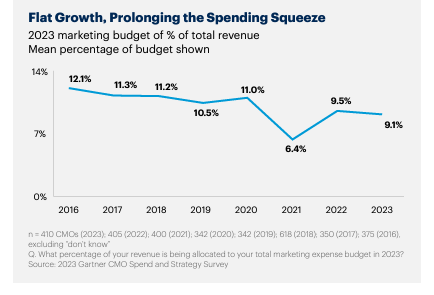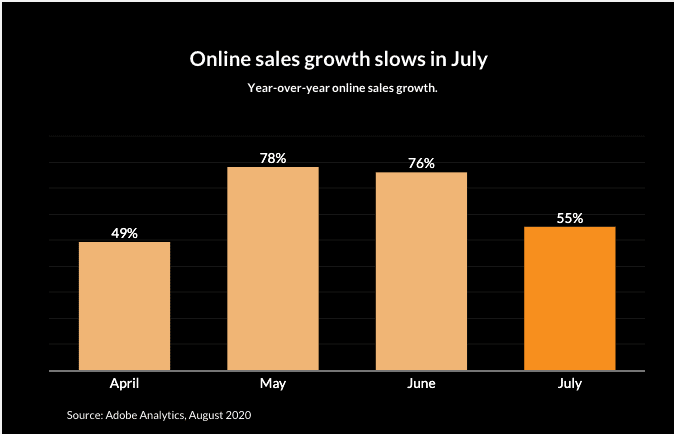As we all know and, unfortunately, have probably also experienced, every dollar in our marketing expenditure must be justified, and we have to prove our marketing ROI or risk budget cuts!
Chief Marketing Officers (CMOs) face the dual challenges of managing budget constraints while also demonstrating the return on investment (ROI) of their marketing initiatives.
The rapid evolution of today’s digital landscape only compounds these challenges, demanding strategic agility and an analytical mindset from today’s marketing leaders.
If you prefer to listen rather than read:
Marketing Budget Allocation
Gartner’s most recent (2023) CMO Spend Survey reported that marketing budgets fell from 9.5% of company revenue to 9.1% in 2023. This confirms the constant pressure on marketing to do more with less.
As a result, most have readjusted their commitments to marketing channels, resources, and programs, and a similar proportion say they are facing significant pressure to cut martech spending.
ROI on Marketing and Digital Specifically
The rule of thumb for marketing ROI is typically a 5:1 ratio, with exceptional ROI being considered at around a 10:1 ratio. Anything below a 2:1 ratio is considered not profitable, as the costs to produce and distribute goods/services often mean organizations will break even with their spend and returns.
However, according to a recent Data & Marketing Association (DMA) study, the average ROI for digital (email) marketing in 2022 was $36 for every $1 spent.
Of course, this figure varies by industry, with retail, e-commerce, and consumer goods companies often seeing higher returns thanks to direct purchase links in their emails.
While B2B companies have a slightly lower ROI, they benefit from the long-term value of relationship building and lead nurturing through email.
These numbers are a testament to the effectiveness of well-executed marketing strategies and the ROI of email. It’s clear that email marketing is thriving in the digital era.
A Strategic Approach to Navigating Budget Constraints
Reassess and Reprioritize Marketing Channels
In times of budgetary pressure, the first step for CMOs is to conduct a thorough reassessment of existing marketing channels. This involves analyzing each channel’s performance against key metrics to identify areas where spending can be optimized.
The goal is to allocate resources more effectively, focusing on high-performing channels that promise better engagement and conversion rates.
Embrace Cost-Effective Digital Marketing Strategies
Digital marketing offers a plethora of cost-effective strategies that CMOs can leverage.
Content marketing, email marketing, and social media platforms provide avenues for reaching large audiences at a fraction of the cost of traditional advertising.
By creating valuable content that resonates with their target audience, brands can foster engagement, build community, and drive conversions without hefty ad spending.
Foster Creativity and Innovation
It’s not all bad news! Budget constraints can actually serve as a catalyst for creativity and innovation within the marketing team.
Encouraging team members to think outside the box and develop unconventional ideas can lead to cost-effective marketing solutions that drive significant impact.
Whether it’s … Click to continue reading






